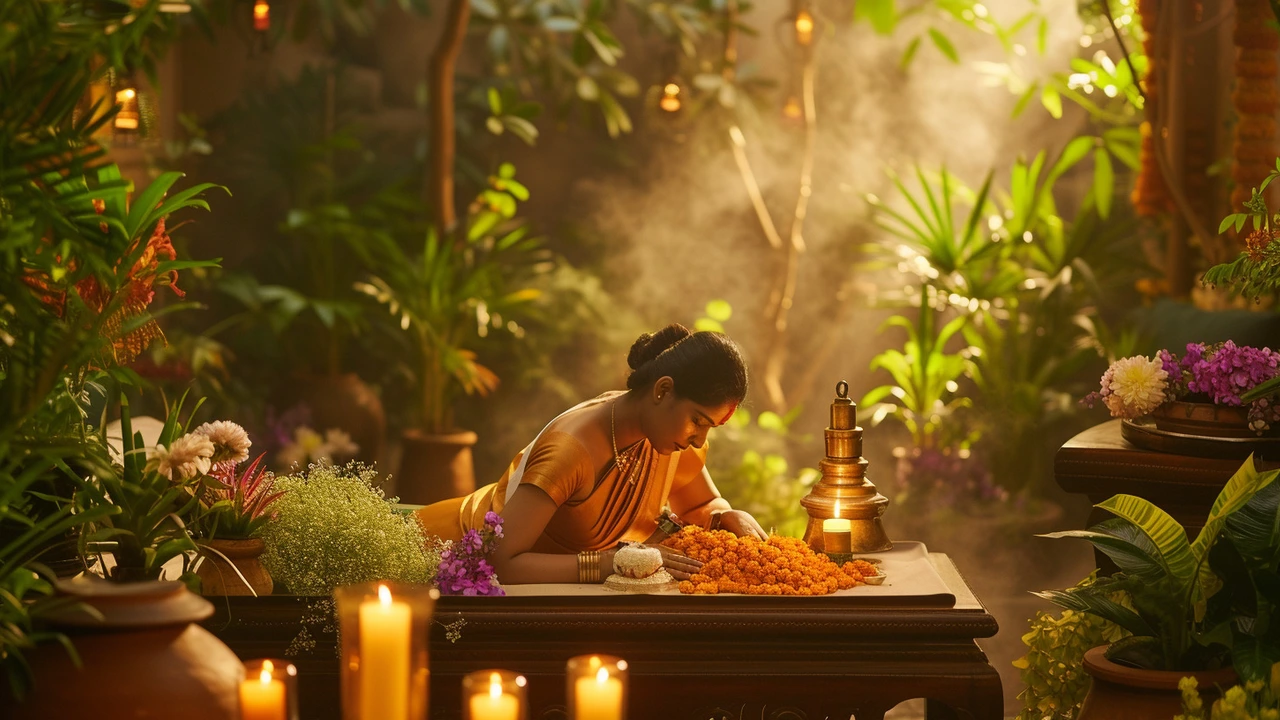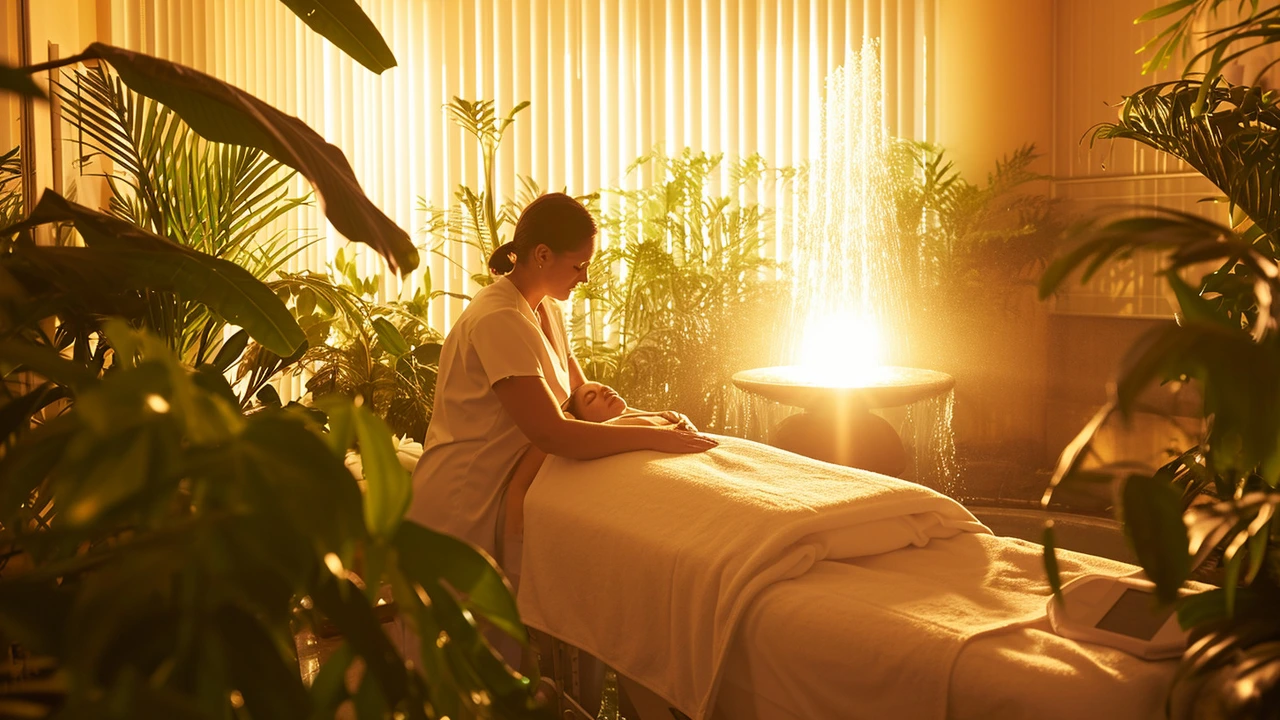Unlocking the Healing Power of Ayurvedic Massage: A Comprehensive Guide

The Foundations of Ayurvedic Massage
Ayurvedic massage is steeped in ancient traditions, forming a cornerstone of Ayurveda, which is a holistic healing system that originated in India thousands of years ago. It's not simply about working on the body's muscles; it's an all-encompassing experience that nurtures the body, mind, and spirit. The principles of Ayurveda revolve around the concept of balancing the body's energies, known as doshas: Vata, Pitta, and Kapha. Ayurvedic massage is personalized to an individual's dosha, enhancing balance and promoting vitality. Focused on releasing toxins, improving circulation, and nurturing the skin with herbal oils, this therapeutic practice taps into the body's innate healing abilities.
Each session begins with a consultation to determine your dosha, which guides the selection of oils and massage techniques. These oils are often warmed, enhancing their absorption and therapeutic effects. Practitioners use a combination of gentle to vigorous techniques, such as tapping, kneading, and squeezing, along with yoga-like stretches to enhance flexibility and circulation. The intention behind every movement is far more than physical manipulation; it's part of an intricate dance between the practitioner's expertise and the body's wisdom, which aligns with the circadian rhythm and seasonal changes for optimal health and well-being.
The Deep Connection Between Oils and Healing
The use of oils is fundamental in Ayurvedic massage, as they are believed to have the power to penetrate not only the physical body but also reach the more subtle layers of being. Each oil is carefully selected for its medicinal properties, and often these oils are infused with a variety of herbs to enhance their efficacy. The oils serve to balance the doshas, promote mental clarity, and provide relief from various ailments. For instance, sesame oil is commonly used to pacify Vata dosha, while coconut oil is favored for Pitta, and mustard oil for Kapha. The application of these oils during a massage nurtures the skin and tissues, while their aroma can have positive effects on the mind and emotions.
Understanding the synergy between the oils and the body's constitution is crucial. Alongside essential oils, carrier oils tailored to one's dosha are applied during the massage to facilitate the absorption of herbs and to provide the perfect slip needed for the massage techniques. Practitioners also consider the seasonal adjustments, as the qualities of oils may be intensified or softened depending on the time of the year. For example, during colder months, more warming oils like sesame may be beneficial, while in the heat of summer, cooling oils like coconut might be favored.
A Journey Through the Techniques and Strokes
Ayurvedic massage involves a repertoire of techniques designed to work on both the gross and subtle body. The strokes, known as 'Snehana,' are generally longer and follow the path of the body's channels, known as 'srotas,' to assist the flow of energy and facilitate the removal of toxins. The practitioner may employ a variety of hand movements—from soft and soothing to vigorous and energizing—depending on the individual's needs. Marma therapy, which targets specific energy points on the body akin to acupuncture points, is another key element. Stimulating these points is said to unlock energy pathways and foster a state of balance within the body.
As the practitioner's hands glide over the contours of the body, the rhythmic movements not only support the physical aspect of unwinding tension and knots but also invite a meditative state for the receiver. This meditative quality is what often distinguishes Ayurvedic massage from other types of massage; it's a holistic process that attends to the silence and space necessary for deep healing to occur. Moreover, the inclusion of gentle stretching and joint rotations adds an element of mobility and flexibility, which contributes to overall well-being and the longevity of the body's functions.
Understanding the Therapeutic Benefits and Outcomes
Engaging in Ayurvedic massage is more than a momentary indulgence; it offers long-term benefits that resonate with aspects of health often overlooked. Regular sessions can lead to significant improvements in one's quality of life. On a physical level, Ayurvedic massage enhances blood circulation, which boosts the nourishment of body tissues, facilitates the removal of waste products, and rejuvenates the body. It also strengthens the immune system by stimulating the lymphatic flow. Psychologically, it can reduce stress, alleviate anxiety, and induce a profound sense of peace and relaxation.
Additionally, Ayurvedic massage can be instrumental in improving sleep patterns, easing muscle stiffness, and increasing joint mobility. An aspect that's particularly beneficial is the potential for emotional release; by working on the body's tissues, practitioners can help to release stored emotions, leading to greater mental clarity and emotional balance. People with chronic conditions such as arthritis, fibromyalgia, and digestive disorders have also noted improvements after adopting Ayurvedic massage as part of their wellness regimen. It's a testament to how this time-tested practice can support the body's natural tendency towards self-healing when given the right environment and care.
Integrating Ayurvedic Massage into Your Wellness Routine
Adopting Ayurvedic massage into your lifestyle does not have to be daunting. Start with finding a reputable practitioner who can guide your journey in understanding your dosha and the most suitable practices for you. Sessions can be tailored from once a week to once a month, depending on your needs and the goals you wish to achieve. Integrating this practice into your routine is also a wonderful opportunity to become more attuned to your body's signals and cycles. As you become more familiar with its principles, you might find yourself drawn to other Ayurvedic practices like yoga, meditation, and dietary adjustments that complement the massage experience.
Making Ayurvedic massage a regular part of life offers a wealth of benefits and serves as an act of self-care that can be deeply nurturing. It's a precious time to slow down, connect with oneself, and facilitate healing on many levels. With each session, you can step back into the world feeling more centered and equipped to handle the ebb and flow of life. Ayurvedic massage isn't just a treatment; it's a holistic embrace, a way to honor the body and cultivate wellness from within that echoes through every aspect of one's being.





